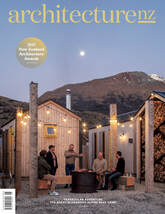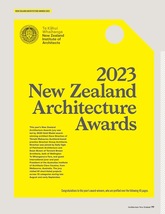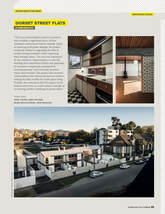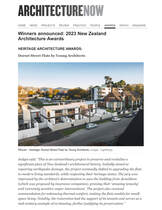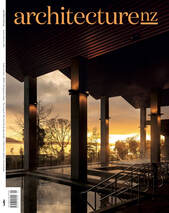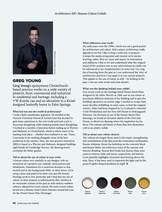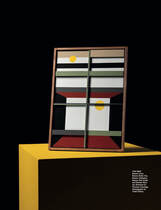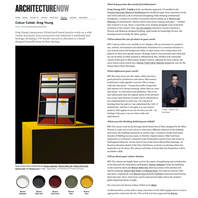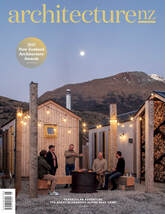
The Dorset Street Flats wins the national Heritage Award at the New Zealand Institute of Architects Awards, 2023.
Heritage Architecture Award
DORSET STREET FLATS
By Young Architects
Christchurch, Ōtautahi
“This is an extraordinary project to preserve and revitalise a significant piece of New Zealand’s architectural history. Initially aimed at repairing earthquake damage, the project eventually shifted to upgrade the flats to modern living standards, while respecting their heritage status. The jury was impressed by the architect’s determination to save the building from demolition (which was proposed by insurance companies), praising their ‘amazing tenacity’ and ‘extremely sensitive major interventions”. The project also received commendation for enhancing thermal comfort, making the flats models for small-space living. Notably, the restoration had the support of its tenants and serves as a mid-century example of co-housing, further justifying its preservation.”
Project team
Greg Young, Andy McLeod, Blake McCutcheon, John McGloin
CHRIS BARTON (ed), “Architecture New Zealand”, November/December 2023, Issue 6, BCI New Zealand, ISSN-0113-4566, p85.
https://architecturenow.co.nz/articles/winners-announced-2023-new-zealand-architecture-awards/
Heritage Architecture Award
DORSET STREET FLATS
By Young Architects
Christchurch, Ōtautahi
“This is an extraordinary project to preserve and revitalise a significant piece of New Zealand’s architectural history. Initially aimed at repairing earthquake damage, the project eventually shifted to upgrade the flats to modern living standards, while respecting their heritage status. The jury was impressed by the architect’s determination to save the building from demolition (which was proposed by insurance companies), praising their ‘amazing tenacity’ and ‘extremely sensitive major interventions”. The project also received commendation for enhancing thermal comfort, making the flats models for small-space living. Notably, the restoration had the support of its tenants and serves as a mid-century example of co-housing, further justifying its preservation.”
Project team
Greg Young, Andy McLeod, Blake McCutcheon, John McGloin
CHRIS BARTON (ed), “Architecture New Zealand”, November/December 2023, Issue 6, BCI New Zealand, ISSN-0113-4566, p85.
https://architecturenow.co.nz/articles/winners-announced-2023-new-zealand-architecture-awards/
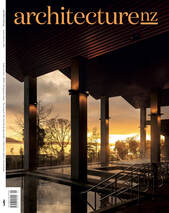
Architect Greg Young talks about the colour scheme for the restored Dorset Street Flats.
Architecture NZ x Resene Colour Collab
GREG YOUNG
Greg Young’s eponymous Christchurch- based practice works on a wide variety of projects, from commercial and industrial to residential and heritage, including a VW Kombi van and an alteration to a Krisel-designed butterfly home in Palm Springs.
What led you into the world of architecture?
I took a fairly unorthodox approach. I’d enrolled at the Victoria University School of Architecture but decided to gain some experience in the real world and took a job in structural draughting while studying architectural draughting. I worked at a number of practices before ending up at Warren and Mahoney in Christchurch, which is where most of my training took place – whether they realised it or not. There, I was lucky to be working alongside some of the best architects in the country. Now, my own practice (started in 2003) is based in a Warren and Mahoney-designed building, right beside 65 Cambridge Terrace. My drawing board overlooks Sir Miles’ garden.
Tell us about the use of colour in your work.
I choose colour very carefully in our designs, with an awareness of a project’s use, outlook, environment and inhabitants. Sometimes it’s a conscious decision to stay neutral and in the background while, at other times, we’re using colour and pattern for their own specific beauty. Heritage work is very particular and I find that my use of colour in other projects is influenced by this, whether it be vernacular colours of the past or mid-century-modern colours, adjusted for local context. My most recent colour award was a Resene Total Colour Maestro Award last year for the Dorset Street Flats (Heritage).
What influences your work?
My early years were the 1990s, which was not a good period for architecture and colour. Mid-century architecture really appeals to me but I like to keep a wide mix of projects – it keeps the studio invigorated and ensures we’re always learning, rather than on ‘rinse and repeat’. In renovations and additions, I like to try and understand what the original intent of the architect was so any interventions we make can be referenced or are complementary in some way. I’m a big fan of learning from the past so I can understand the ‘why’ of architecture, and how I can apply it to our current projects. This applies to my use of colour as well – by looking to the past, I can see what works and what doesn’t.
What was the thinking behind your collab?
Our recent work on the heritage-listed Dorset Street Flats, designed by Sir Miles Warren in 1956, saw us use colour to accentuate different elements of the building and to give the building’s geometry an artistic edge. I needed to scrape back many decades of fiddling, in some cases, to find the original colours. Miles had been inspired by Le Corbusier’s colourful Unité d’Habitation and the Finn Juhl House at Ordrupgaard Museum. On the back of one of the Dorset Street Flats drawings, we found an elevation sketch of the Finn Juhl House, so there’s no denying where his inspiration lay for them. The colours and forms of these flats lent themselves well to an artistic collab.
Tell us about your colour choices.
The colours are largely those used in the repair, strengthening and revitalisation of the flats post the Canterbury earthquakes. Here, Resene Alabaster forms the backdrop on the concrete block and Resene Baltic Sea references some of the exterior and interior detailing. Resene Red Oxide and Resene Siam were used on exterior walls and doors, respectively, and Resene Corn playfully highlights structural steel bracing above the stair. Here, it has been used to represent the light cast by the project’s globe-shaped pendants at night.
Resene Alabaster
Resene Baltic Sea
Resene Red Oxide
Resene Siam
Resene Corn
CHRIS BARTON (ed), “Architecture New Zealand”, January/February 2024, Issue 1, BCI New Zealand, pp46-47.
https://architecturenow.co.nz/articles/resene-colour-collab-greg-young/
Architecture NZ x Resene Colour Collab
GREG YOUNG
Greg Young’s eponymous Christchurch- based practice works on a wide variety of projects, from commercial and industrial to residential and heritage, including a VW Kombi van and an alteration to a Krisel-designed butterfly home in Palm Springs.
What led you into the world of architecture?
I took a fairly unorthodox approach. I’d enrolled at the Victoria University School of Architecture but decided to gain some experience in the real world and took a job in structural draughting while studying architectural draughting. I worked at a number of practices before ending up at Warren and Mahoney in Christchurch, which is where most of my training took place – whether they realised it or not. There, I was lucky to be working alongside some of the best architects in the country. Now, my own practice (started in 2003) is based in a Warren and Mahoney-designed building, right beside 65 Cambridge Terrace. My drawing board overlooks Sir Miles’ garden.
Tell us about the use of colour in your work.
I choose colour very carefully in our designs, with an awareness of a project’s use, outlook, environment and inhabitants. Sometimes it’s a conscious decision to stay neutral and in the background while, at other times, we’re using colour and pattern for their own specific beauty. Heritage work is very particular and I find that my use of colour in other projects is influenced by this, whether it be vernacular colours of the past or mid-century-modern colours, adjusted for local context. My most recent colour award was a Resene Total Colour Maestro Award last year for the Dorset Street Flats (Heritage).
What influences your work?
My early years were the 1990s, which was not a good period for architecture and colour. Mid-century architecture really appeals to me but I like to keep a wide mix of projects – it keeps the studio invigorated and ensures we’re always learning, rather than on ‘rinse and repeat’. In renovations and additions, I like to try and understand what the original intent of the architect was so any interventions we make can be referenced or are complementary in some way. I’m a big fan of learning from the past so I can understand the ‘why’ of architecture, and how I can apply it to our current projects. This applies to my use of colour as well – by looking to the past, I can see what works and what doesn’t.
What was the thinking behind your collab?
Our recent work on the heritage-listed Dorset Street Flats, designed by Sir Miles Warren in 1956, saw us use colour to accentuate different elements of the building and to give the building’s geometry an artistic edge. I needed to scrape back many decades of fiddling, in some cases, to find the original colours. Miles had been inspired by Le Corbusier’s colourful Unité d’Habitation and the Finn Juhl House at Ordrupgaard Museum. On the back of one of the Dorset Street Flats drawings, we found an elevation sketch of the Finn Juhl House, so there’s no denying where his inspiration lay for them. The colours and forms of these flats lent themselves well to an artistic collab.
Tell us about your colour choices.
The colours are largely those used in the repair, strengthening and revitalisation of the flats post the Canterbury earthquakes. Here, Resene Alabaster forms the backdrop on the concrete block and Resene Baltic Sea references some of the exterior and interior detailing. Resene Red Oxide and Resene Siam were used on exterior walls and doors, respectively, and Resene Corn playfully highlights structural steel bracing above the stair. Here, it has been used to represent the light cast by the project’s globe-shaped pendants at night.
Resene Alabaster
Resene Baltic Sea
Resene Red Oxide
Resene Siam
Resene Corn
CHRIS BARTON (ed), “Architecture New Zealand”, January/February 2024, Issue 1, BCI New Zealand, pp46-47.
https://architecturenow.co.nz/articles/resene-colour-collab-greg-young/

